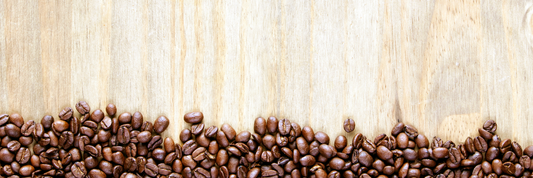In response to the growing environmental concerns associated with plastic pollution, cellulose packaging has emerged as a sustainable alternative. Derived from natural sources, cellulose-based materials offer biodegradable and eco-friendly solutions for various packaging needs. This article delves into the intricacies of cellulose packaging, addressing its definition, production, applications, and environmental impact.
Eco-Packaging: Guide for business to switch to sustainability
What is Cellulose?
Cellulose is an organic carbohydrate polymer that forms the primary structural component of plant and algae cell walls, making it the most abundant biopolymer on Earth.
Although animals do not produce cellulose, it plays a vital role in ecosystems. Many insects and microorganisms rely on cellulose as a food source or building material.
Due to its rigidity, biodegradability, and renewability, cellulose is increasingly used as an eco-friendly alternative to plastic and styrofoam in packaging and industrial applications.

What is Cellulose Packaging?
Cellulose packaging refers to materials derived from cellulose used for packaging purposes. Common forms include paper, cardboard, and cellophane. Additionally, cellulose can be processed into bioplastics, offering biodegradable alternatives to conventional petroleum-based plastics. These materials are utilized in producing food containers, bottles, cups, and trays.
Why is Cellulose Used in Packaging?
Cellulose is widely used in packaging due to its renewability, biodegradability, and excellent barrier properties. It is particularly effective for food packaging as it helps preserve freshness and extend shelf life without introducing harmful chemicals.
Key Characteristics of Cellulose Packaging
-
Biodegradable – Breaks down naturally without leaving toxic residues.
-
Compostable – Can decompose in industrial or home composting conditions.
-
Renewable – Made from sustainable plant sources.
-
Transparent & Flexible – Can be used as a direct replacement for plastic films.
How is Cellulose Packaging Made?
The production process of cellulose packaging involves several steps:
-
Sourcing Raw Materials: Harvesting cellulose-rich materials such as wood, cotton, or agricultural waste.
-
Pulping: Breaking down the raw materials into pulp through mechanical or chemical methods.
-
Refining: Removing impurities to obtain pure cellulose.
-
Forming: Shaping the cellulose into sheets or desired packaging forms via extrusion or molding.
-
Finishing: Applying coatings or adhesives to enhance functionality, such as moisture resistance.
Types of Cellulose Packaging
Cellulose packaging comes in various forms, each designed for specific applications across multiple industries. Here are some of the most common types:
1. Cellophane (Transparent Cellulose Film)
-
Made from regenerated cellulose, often coated to improve moisture resistance.
-
Used in food packaging, gift wraps, and tobacco packaging.
-
Completely biodegradable and compostable under the right conditions.

2. Molded Cellulose Packaging
-
Created by shaping cellulose pulp into rigid forms.
-
Used for egg cartons, drink carriers, protective packaging for electronics, and industrial cushioning materials.
-
A sustainable alternative to expanded polystyrene (EPS) foam packaging.
3. Cellulose-Based Paper & Cardboard
-
Includes paper bags, corrugated cardboard boxes, and carton boards.
-
Widely used in food delivery, shipping, and retail packaging.
-
Easily recyclable and often made from recycled paper.

4. Bio-Based Cellulose Films and Coatings
-
Often laminated onto paper or cardboard to create water-resistant and grease-resistant packaging.
-
Used in food trays, takeaway containers, and compostable coffee cups.
5. Cellulose-Derived Bioplastics
-
Innovatively engineered bio-based plastics, made using cellulose fibers.
-
Used in flexible food pouches, cosmetic packaging, and biodegradable plastic films.
Applications of Cellulose Packaging
Cellulose packaging is widely used across different industries due to its biodegradable and recyclable properties. Let's check some cellulose packaging examples below:
1. Cellulose Food Packaging and Beverage Industry
-
Fresh Produce Packaging – Biodegradable wraps and trays for fruits and vegetables.
-
Bakery Packaging – Cellophane or paper-based wraps for bread, cakes, and pastries.
-
Deli and Meat Packaging – Wax-coated cellulose sheets for sandwiches, meats, and cheeses.
-
Compostable Coffee Cups – Lined with bio-based cellulose coatings.
-
Tea and Coffee Filters – Made from unbleached cellulose fiber.
2. Retail and E-Commerce Packaging
-
Paper Bags and Cardboard Boxes – Used in sustainable shipping and product packaging.
-
Luxury Product Packaging – High-quality cellulose-based wrapping for premium goods.
-
Protective Cushioning Materials – Molded pulp trays for electronics and glassware.
3. Cosmetics and Personal Care Industry
-
Compostable Packaging for Skincare & Beauty Products – Cellulose-based tubes, pouches, and boxes.
-
Cellophane Wrapping for Soaps and Bath Products – A biodegradable alternative to plastic shrink wraps.
4. Pharmaceutical and Medical Industry
-
Blister Packs for Tablets – Created with a mix of bio-based plastics and cellulose materials.
-
Sterile Medical Packaging – Paper-based packaging for surgical tools and bandages.
5. Industrial and Electronics Packaging
-
Molded Pulp Cushioning – Sustainable alternative to foam packaging for fragile electronics and appliances.
-
Compostable Film Overwraps – Used for industrial component protection.
6. Sustainable Agriculture & Gardening
-
Seed Packaging & Plant Pots – Biodegradable cellulose-based materials for growing plants without plastic.
-
Mulch Films – Used to retain soil moisture and reduce plastic waste in agriculture.
Advantages and Disadvantages of Cellulose Packaging
While cellulose packaging offers many benefits, there are some drawbacks to consider.
Cellulose Packaging Advantages
-
Environmentally Friendly – Cellulose is sourced from renewable plant-based materials and is biodegradable.
-
Compostable – Many cellulose-based materials can decompose within weeks or months in industrial or home composting systems.
-
Recyclable – Paper and cardboard packaging can be easily recycled multiple times.
-
Safe for Food Contact – Unlike some plastic packaging, cellulose-based packaging is free from harmful chemicals such as BPA.
-
Strong and Durable – Molded pulp packaging provides excellent shock absorption and protection.
-
Versatile Applications – Can be used for food, cosmetics, pharmaceuticals, and industrial packaging.
Disadvantages of Cellulose Packaging
-
Moisture Sensitivity – Some cellulose-based materials (e.g., paper and molded pulp) may not withstand prolonged exposure to liquids unless treated with coatings.
-
Higher Cost – Compared to conventional plastic packaging, biodegradable cellulose-based alternatives are often more expensive.
-
Durability Limitations – While strong, cellulose materials may not be as flexible or long-lasting as plastic-based packaging.
-
Production Energy – The process of refining cellulose and creating biodegradable coatings requires significant energy consumption.
Cellulose Packaging Disposal
While cellulose packaging is biodegradable, proper disposal ensures it breaks down efficiently and benefits the environment. Here are some recommended methods:
-
Home Composting: If you have a compost bin or heap, cellulose packaging can be added. Crumple it rather than laying it flat to create air pockets that aid decomposition.
-
Community Composting: Many municipalities offer public composting programs. Check with your local council to confirm if cellulose packaging is accepted in industrial composting facilities.
-
Food Waste Bin: In some areas, cellulose packaging may be suitable for food waste collection, but it's best to verify local regulations.
-
General Waste Bin: If no composting options are available, disposal in a general waste bin is an alternative. While not ideal, cellulose packaging remains inert and does not degrade due to low moisture levels.
By choosing the right disposal method, you can help maximize the eco-friendly benefits of cellulose packaging.
The Future of Cellulose Packaging
Innovations in Cellulose-Based Packaging Technology
-
Water-resistant cellulose coatings for better food preservation
-
Edible cellulose packaging to eliminate waste completely
Market Trends and Consumer Demand for Sustainable Packaging
-
Rising consumer preference for plastic-free packaging
-
Government regulations banning single-use plastics
Government Regulations and Policies Supporting Cellulose Packaging
-
EU Green Deal promoting sustainable materials
-
US and Canada’s plastic ban policies encouraging alternatives
FAQs About Cellulose Packaging For Food
Can Cellulose Replace Plastic?
The potential of cellulose to replace plastic is significant. Cellophane, a cellulose-based film, is gaining traction as a substitute for plastic film packaging. According to a Future Market Insights report, the cellulose packaging market is projected to experience a compound annual growth rate of 4.9% between 2018 and 2028, with the food and beverage sector accounting for 70% of this growth.
Is Cellulose a Waste Product?
Cellulose itself is not a waste product; rather, it is a valuable natural polymer. However, it can be extracted from agricultural by-products and waste materials, promoting resource efficiency and sustainability in its production.
Is Cellulose Packaging Recyclable?
Cellulose packaging is both recyclable and compostable. Paper and cardboard, common forms of cellulose packaging, are widely accepted in recycling programs. Additionally, materials like cellophane can decompose in composting environments, returning to the earth without leaving harmful residues.
How Long Does It Take for Cellulose to Decompose?
The decomposition rate of cellulose packaging varies based on environmental conditions and material composition. Generally, cellulose-based materials decompose much faster than conventional plastics, often breaking down within weeks to a few months in composting settings.
Conclusion
Cellulose packaging stands out as a promising solution to the environmental challenges posed by traditional plastics. Its biodegradability, recyclability, and versatility make it an attractive option for various industries, particularly the food and beverage sector. As technological advancements continue and consumer demand for sustainable products grows, cellulose packaging is poised to play a pivotal role in the future of eco-friendly packaging solutions.




